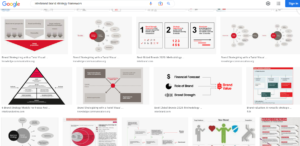Merriam-Webster defines the word framework as:
1.a : a basic conceptional structure (as of ideas)
b : a skeletal, openwork, or structural frame
In my business, which is brand strategy development, I rely on a framework. It is made up of one brand claim, supported by three proof planks. That’s the structure. That’s the skeleton.
Everybody in branding understands the word claim. And people know what the word proof means — so, it’s not a difficult concept.
I’ve been doing this for a while and have yet to find another brand strategy framework that outlines what a brand truly needs to truly succeed in the marketplace. And that does so in a simple way.
At What’s The Idea? brand strategy defines as “an organizing principle for product, experience and messaging.” The claim and proof framework provides that organizing principle.
Another benefit of this framework is that it leaves creative development to the creatives. There is no voice. There is no persona. No purpose or essence. Creative teams deliver on the claim then prove it with evidence. That simple. Of course, there should be visual identity components: logo, name, typeface and such. But even those can be a bit fluid so long as the claim and proof are there…and the creative team has a good reason for the departure.
Google these three words “brand strategy framework” and see what happens. Then click images. It’s a strategic mess. General Patton wouldn’t approve. If you’d would like to see examples of real, clean, clear brand strategy frameworks please write Steve at WhatsTheIdea dot com.
Peace.



